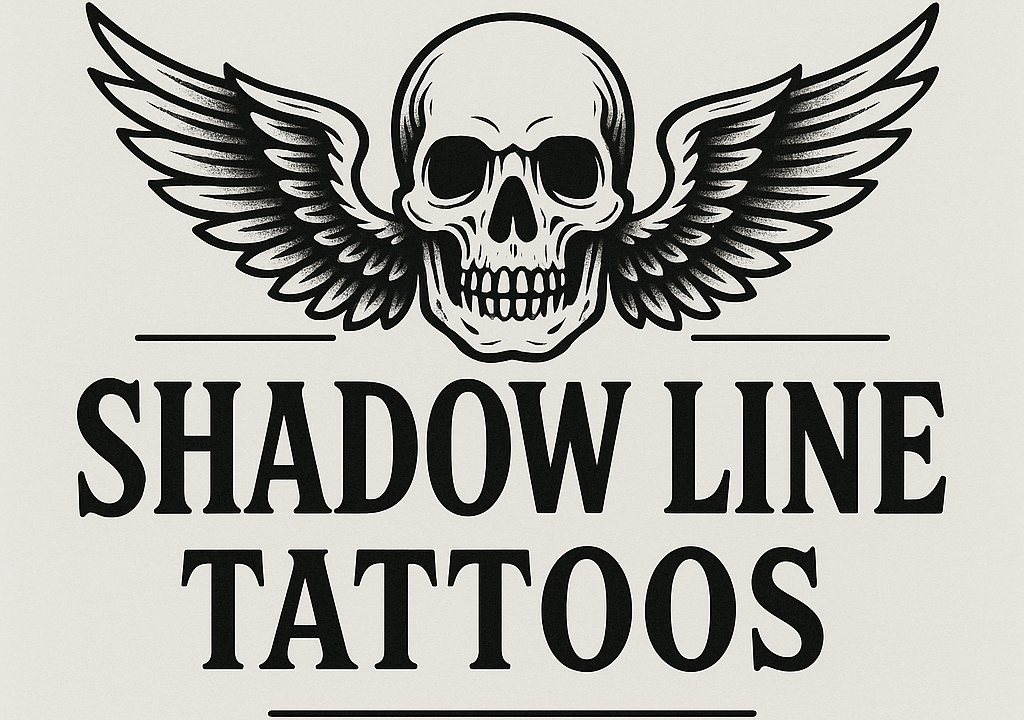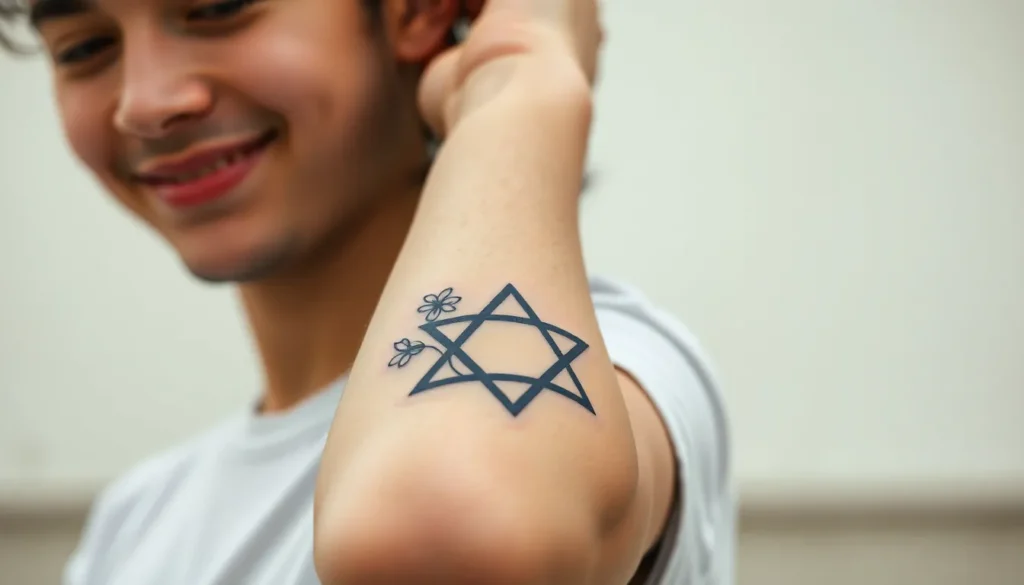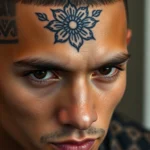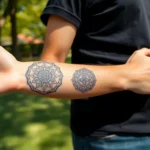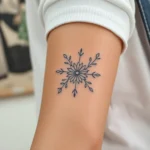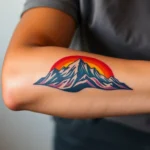Jewish tattoo art has evolved into a powerful form of cultural expression that beautifully bridges ancient traditions with modern creativity. We’ve witnessed countless individuals seeking meaningful ways to honor their heritage through ink that tells their personal story while celebrating thousands of years of rich history and symbolism.
Today’s Jewish tattoo designs range from sacred Hebrew calligraphy and Star of David motifs to intricate depictions of religious artifacts and meaningful biblical quotes. We understand that choosing the perfect design involves balancing respect for tradition with personal artistic vision – it’s about finding that sweet spot where cultural significance meets individual expression.
Whether you’re exploring your first piece of Jewish-inspired body art or adding to an existing collection we’re here to guide you through the most compelling design options available. From minimalist Hebrew letters to elaborate mezuzah illustrations these tattoo ideas will help you wear your faith and heritage with pride.
Traditional Hebrew Script Tattoo Designs
Traditional Hebrew script tattoos offer profound ways to express Jewish identity through the sacred language itself. These designs connect us directly to thousands of years of spiritual tradition and cultural heritage.
Biblical Verses and Prayers
Sacred passages from the Torah, Tanakh, and traditional prayers create deeply meaningful tattoo designs that carry spiritual significance. Popular choices include Psalm 23 (“The Lord is my shepherd”), the Shema prayer, and verses from Ecclesiastes about time and seasons. We often see clients choose passages that have guided them through difficult times or represent core values they want to carry with them.
Protective prayers like the Traveler’s Prayer (Tefilat HaDerech) and blessings for new beginnings resonate particularly well as permanent body art. These verses serve as daily reminders of faith and provide comfort during challenging moments. Common placements include the forearm, ribcage, and shoulder blade where the text can be read easily.
Wedding verses and anniversary passages from Song of Songs create romantic Hebrew script tattoos for couples. Phrases like “I am my beloved’s and my beloved is mine” (Ani l’dodi v’dodi li) celebrate love while honoring Jewish tradition.
Hebrew Names and Personal Meanings
Family names in Hebrew script honor ancestors and maintain connections to Jewish lineage across generations. Many people choose to tattoo their Hebrew names, children’s names, or grandparents’ names who survived the Holocaust. These designs often incorporate decorative elements like olive branches or pomegranates.
Personal Hebrew names carry deep spiritual meaning beyond their English translations. Names like Miriam (bitter waters turned sweet), David (beloved), or Sarah (princess) connect us to biblical figures and their stories. We recommend researching the full meaning and story behind Hebrew names before committing to a tattoo.
Memorial tattoos featuring Hebrew names and dates honor deceased family members in a way that feels culturally appropriate. Adding phrases like “may their memory be a blessing” (zichronam livracha) creates lasting tributes that blend personal grief with Jewish mourning traditions.
Calligraphy Styles and Font Variations
Ashuri script represents the traditional square Hebrew letters used in Torah scrolls and creates bold, easily readable tattoos. This ancient style carries the most religious significance and works well for longer passages or names. The letters’ geometric shapes translate beautifully to tattoo art while maintaining their sacred appearance.
Rashi script offers a more flowing, cursive alternative that many find aesthetically pleasing for personal tattoos. Originally developed for biblical commentary, this style creates elegant Hebrew text that’s perfect for shorter phrases or single words. We see this style chosen frequently for names and brief inspirational phrases.
Modern Hebrew fonts provide contemporary alternatives that blend traditional letter forms with artistic flair. Styles like Frank Ruhl Libre or Alef create unique looks while remaining completely readable to Hebrew speakers. These fonts work particularly well when incorporating Hebrew text into larger design compositions with symbols or decorative elements.
Sacred Jewish Symbols for Body Art
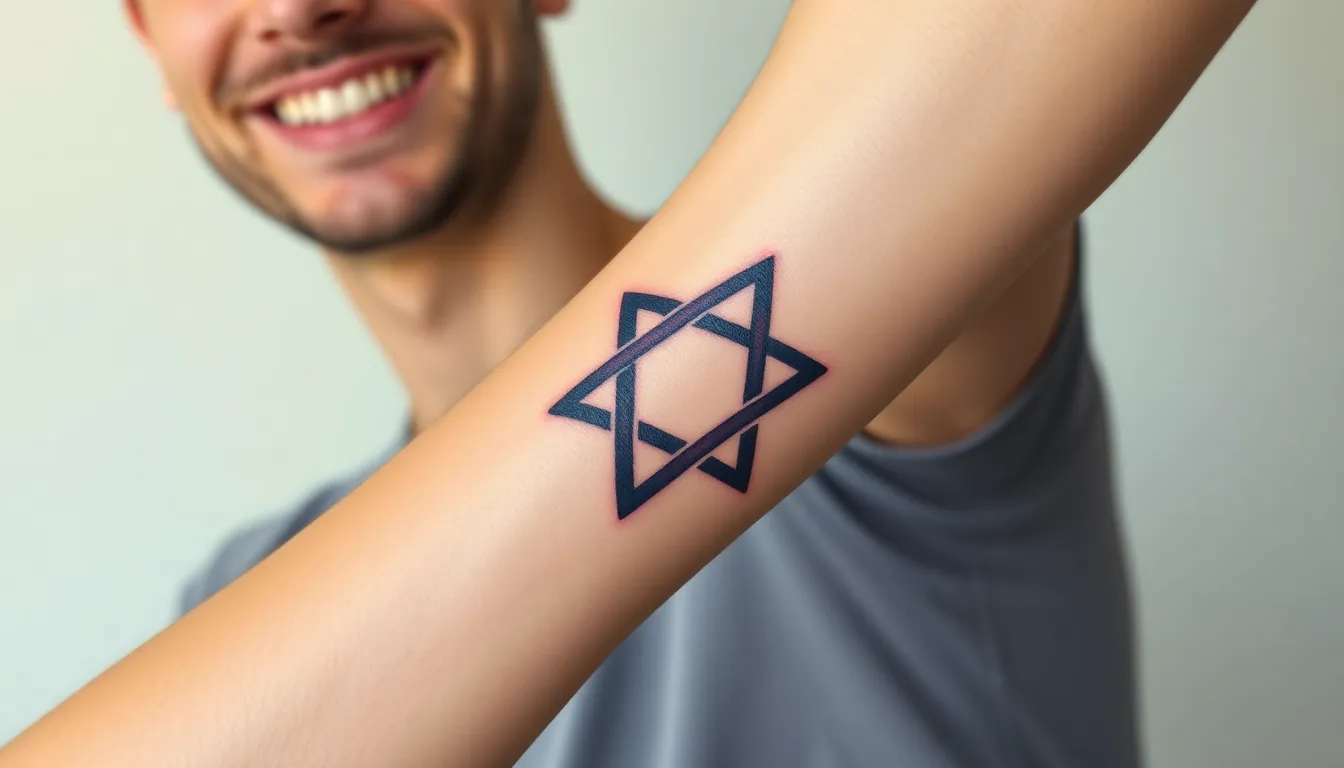
Beyond Hebrew script and calligraphy, Jewish tattoo art embraces powerful symbols that carry profound spiritual and cultural meaning. These sacred emblems offer unique ways to express faith and heritage through body art.
Star of David Interpretations
We recognize the Star of David (Magen David) as one of the most iconic Jewish symbols for tattoo designs. This hexagram formed by two overlapping equilateral triangles represents Jewish identity, faith, and the divine connection between heaven and earth. Traditional interpretations view it as the Shield of David, symbolizing divine protection and guidance attributed to King David’s legacy.
Modern tattoo artists create various Star of David designs ranging from simple geometric lines to elaborate decorative versions. Some incorporate the symbol’s seven elements—six points plus the center—to represent virtues like kindness, severity, harmony, perseverance, splendor, foundation, and royalty. Others combine the star with Hebrew text, floral elements, or watercolor effects to personalize the design.
Popular placement options include the wrist, shoulder blade, or chest area where the symbol can be prominently displayed. Many choose to incorporate family names or important dates within the star’s framework, creating a deeply personal memorial piece.
Hamsa Hand Designs
We see the Hamsa hand gaining popularity as a protective symbol in Jewish tattoo art. This open palm design features an eye in the center and serves as a talisman against the evil eye while representing protection, blessing, and good fortune. Artists often create intricate patterns within the palm using mandala designs, Hebrew letters, or traditional Jewish motifs.
Contemporary Hamsa tattoos incorporate various artistic styles from minimalist line work to detailed ornamental designs. Some feature the hand pointing upward for protection while others point downward to invite blessings and abundance. Color variations range from traditional black ink to vibrant blues and golds that enhance the symbol’s spiritual significance.
Placement typically occurs on the forearm, back of the hand, or between the shoulder blades where the protective symbolism can be most effective. Many individuals combine the Hamsa with other Jewish symbols like the Star of David or Hebrew prayers to create comprehensive spiritual designs.
Tree of Life Representations
We find the Tree of Life (Etz Chaim) particularly meaningful in Jewish mystical traditions and Kabbalah teachings. This symbol represents the interconnectedness of all life, divine wisdom, and spiritual growth through its branches reaching toward heaven and roots grounding in earth. Tattoo interpretations often feature flowing branches, intricate root systems, or stylized tree silhouettes that convey themes of continuity, strength, and renewal.
Artists create Tree of Life designs using various approaches including realistic botanical illustrations, geometric abstractions, or Celtic inspired patterns. Some incorporate the ten Sefirot from Kabbalistic tradition as nodes or fruits on the branches, while others weave Hebrew letters or sacred texts throughout the design. Seasonal variations show the tree in different states representing life cycles and spiritual transformation.
Common placement areas include the back, ribcage, or thigh where the vertical nature of the tree can be fully displayed. Families often choose matching or complementary Tree of Life tattoos to symbolize their shared roots and continuing legacy across generations.
Biblical Scene Tattoo Inspirations
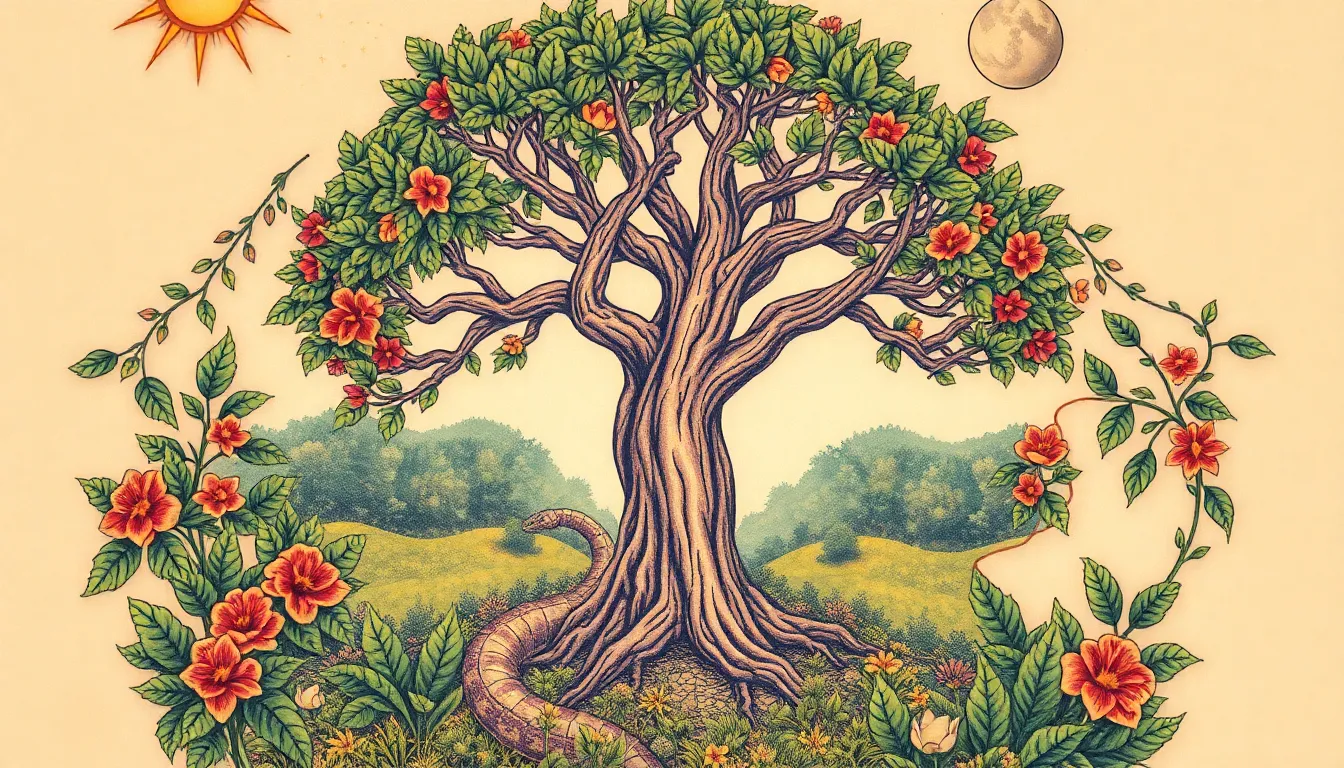
Biblical narratives offer powerful visual stories that translate beautifully into meaningful tattoo art. These sacred scenes connect us to foundational moments in Jewish history while creating stunning body art.
Creation and Garden of Eden
Creation tattoos capture the divine moment when God breathed life into existence. We often see these designs featuring the Tree of Life with intricate branches reaching toward heaven, symbolizing our connection to the divine source. Paradise imagery includes lush gardens with flowing rivers, representing the four rivers of Eden mentioned in Genesis.
Artists frequently incorporate the serpent winding around the forbidden tree, creating a compelling narrative of temptation and choice. Some designs showcase Adam and Eve in silhouette form, emphasizing humanity’s original innocence. The Hebrew word “Bereshit” (In the beginning) often accompanies these tattoos, adding textual depth to the visual story.
Popular placement options include the back or ribcage, allowing for expansive garden scenes with detailed foliage and celestial elements.
Exodus and Parting of the Red Sea
Exodus tattoos commemorate the pivotal moment of Jewish liberation from Egyptian bondage. We see Moses depicted with his staff raised high, commanding the waters to part through divine power. Dramatic wave formations create natural boundaries in the design, with the Israelites crossing on dry ground between towering walls of water.
Egyptian chariots often appear in the background, representing the oppression being left behind. Some artists include the pillar of fire and cloud that guided the Israelites, adding symbolic elements of divine protection. Hebrew text such as “Yetziat Mitzrayim” (Exodus from Egypt) or verses from the Song of the Sea enhance the spiritual significance.
These tattoos work exceptionally well as sleeve pieces or large back pieces, accommodating the epic scale of this biblical miracle.
David and Goliath Battle
David and Goliath tattoos celebrate the triumph of faith over seemingly impossible odds. We typically see young David portrayed with his simple sling, facing the towering Philistine giant armed with spear and shield. The contrast in size emphasizes the miraculous nature of David’s victory through divine assistance.
Stone imagery plays a crucial role, with the smooth stone from the brook often highlighted as it strikes Goliath’s forehead. Some designs show the moment of impact, while others capture David’s confident stance before the battle. The Hebrew phrase “Mi kamocha ba’elim Adonai” (Who is like You among the mighty, O Lord) frequently accompanies these tattoos.
Forearm and shoulder placements work well for these designs, allowing the dramatic confrontation to unfold across the contours of the body.
Modern Jewish Identity Tattoo Concepts
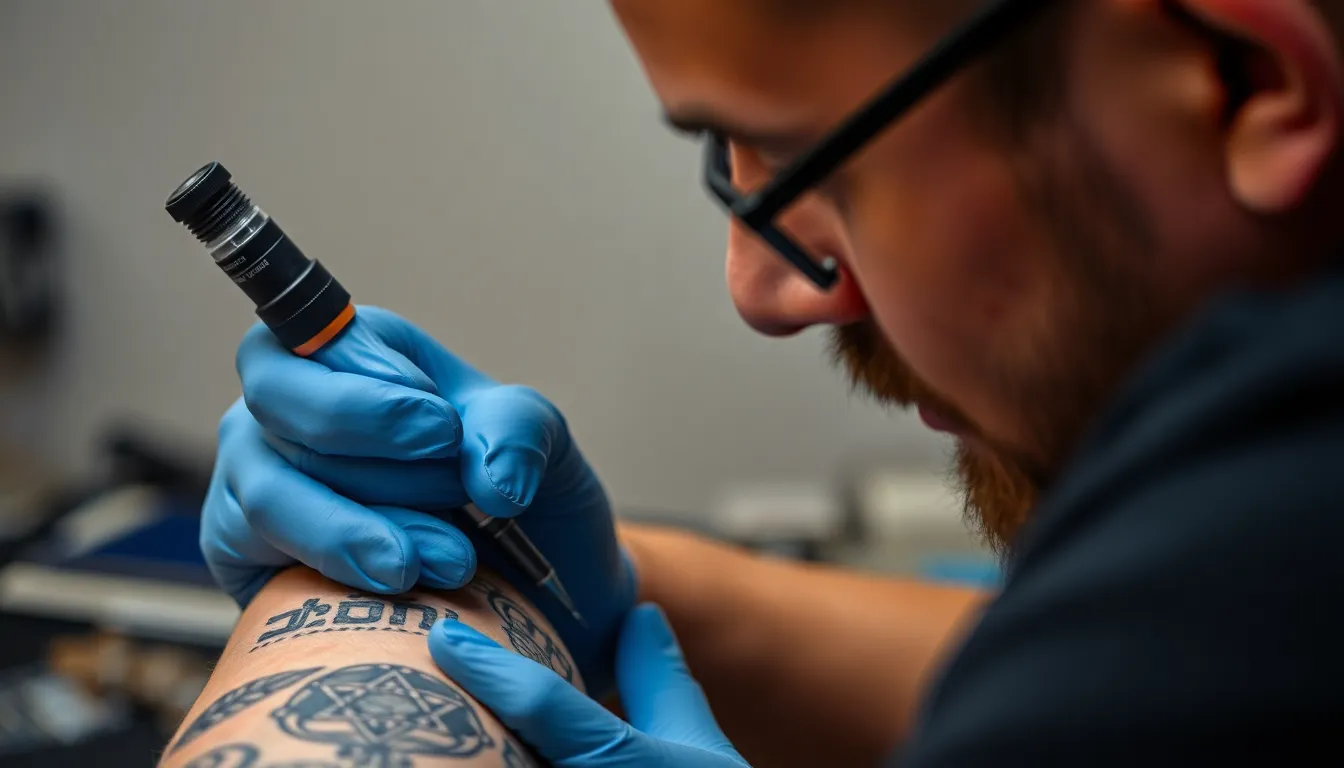
Modern Jewish tattoos serve as powerful expressions of personal identity and faith connection, reflecting our contemporary approach to honoring Jewish heritage through body art.
Contemporary Jewish Art Styles
Hebrew calligraphy stands out as the most popular contemporary style, featuring intricate designs that transform sacred letters into stunning visual art. We see artists incorporating flowing Hebrew scripts that maintain their spiritual significance while creating aesthetically pleasing compositions. Cultural symbolism forms another major artistic approach, with designs featuring the Star of David, Hamsa hand, and Tree of Life carrying deep spiritual meanings that resonate with modern Jewish identity.
Artists often blend traditional Jewish motifs with contemporary tattoo techniques, creating pieces that speak to both ancient heritage and modern self-expression. These designs range from minimalist single-symbol tattoos to complex compositions that tell complete spiritual stories through visual elements.
Cultural Heritage Combinations
Star of David with infinity symbols represents one of the most meaningful combinations, symbolizing both Jewish identity and endless spiritual possibilities. We often recommend this pairing for individuals seeking to express their eternal connection to Jewish faith and culture. Hamsa with floral patterns creates another popular combination, merging the protective hand symbol with natural beauty elements that represent growth and prosperity.
Many people choose to incorporate family names in Hebrew alongside traditional symbols, creating personalized pieces that honor both collective Jewish heritage and individual family history. These combinations allow for unique expressions that maintain cultural authenticity while reflecting personal stories and connections.
Personal Faith Journey Expressions
Holocaust remembrance tattoos serve as powerful tributes to family members and stories of resilience, often featuring Hebrew dates, names, or symbolic elements that honor those lost. We see many individuals choosing these designs to ensure their family’s history remains visible and remembered. Scriptural quotes from the Torah or Talmud provide another meaningful way to express personal faith journeys, with popular choices including verses that have guided individuals through important life challenges.
Memorial tattoos featuring Hebrew text commemorate deceased loved ones while maintaining spiritual connections through sacred language. These personal expressions often incorporate birth and death dates in Hebrew numerology, creating lasting tributes that blend mourning with celebration of life and faith.
Holocaust Remembrance Tattoo Ideas
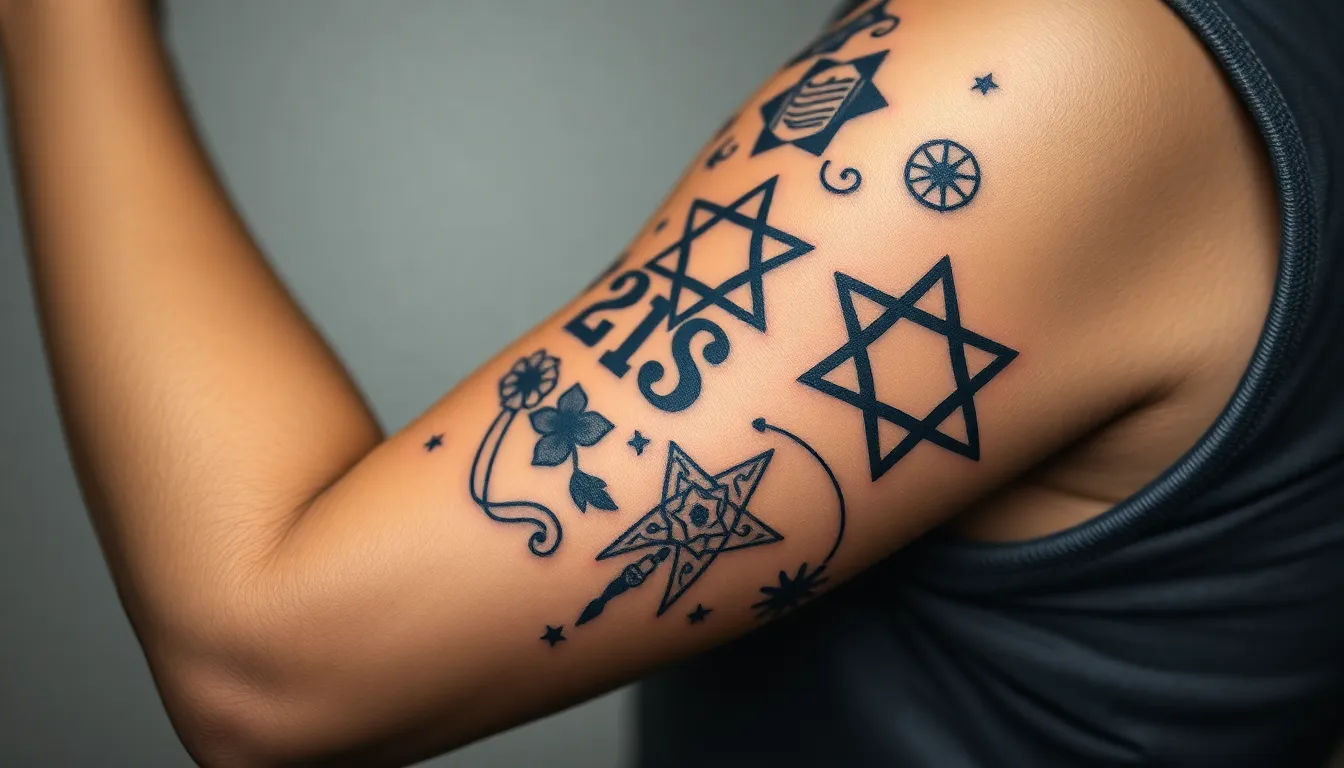
Holocaust remembrance tattoos carry profound significance for those seeking to honor family history and preserve collective memory. These designs serve as permanent tributes to resilience, loss, and the importance of never forgetting.
Memorial Numbers and Dates
Memorial number tattoos have become powerful ways to honor family members who were imprisoned during the Holocaust. Descendants of Holocaust survivors often choose to replicate their relatives’ Auschwitz serial number tattoos as permanent reminders of their family’s survival story. These numerical tattoos create direct connections to those who endured unimaginable hardships and emerged as living testimonies to human resilience.
Important dates hold special meaning in Holocaust remembrance tattoos. Liberation dates, arrival dates at concentration camps, and birthdates of lost family members frequently appear in these memorial designs. Many people combine these important numbers with symbols like the Star of David or menorah to create more comprehensive tributes that honor both exact memories and broader Jewish identity.
Survivor Story Tributes
Personal survival stories translate beautifully into meaningful tattoo designs that celebrate individual resilience and family legacy. Survivors’ quotes, meaningful phrases, and imagery that reflects their journey through adversity often form the foundation of these tribute tattoos. Each design tells a unique story of survival that deserves recognition and remembrance.
Family heritage elements play crucial roles in survivor story tattoos. Names of relatives who survived or perished during the Holocaust, hometown references, and symbols representing pre war life help create comprehensive tributes to family history. These tattoos serve as bridges between generations, ensuring that family stories continue to live on through permanent artistic expression.
Never Forget Commemorations
“Never Forget” phrases appear prominently in Holocaust remembrance tattoos, written in both Hebrew and English to emphasize the universal importance of historical memory. These simple yet powerful words carry immense weight and serve as daily reminders of our collective responsibility to preserve Holocaust history. The phrase reinforces the commitment to ensuring such atrocities never happen again.
Commemorative symbols enhance the emotional impact of Never Forget tattoos. Memorial candles, flowers, barbed wire, and other symbolic elements help create visually striking designs that honor Holocaust victims. Many designs incorporate multiple commemorative elements to create comprehensive memorials that capture both the tragedy and the importance of remembrance in contemporary Jewish culture.
Kabbalah and Mystical Jewish Tattoo Designs
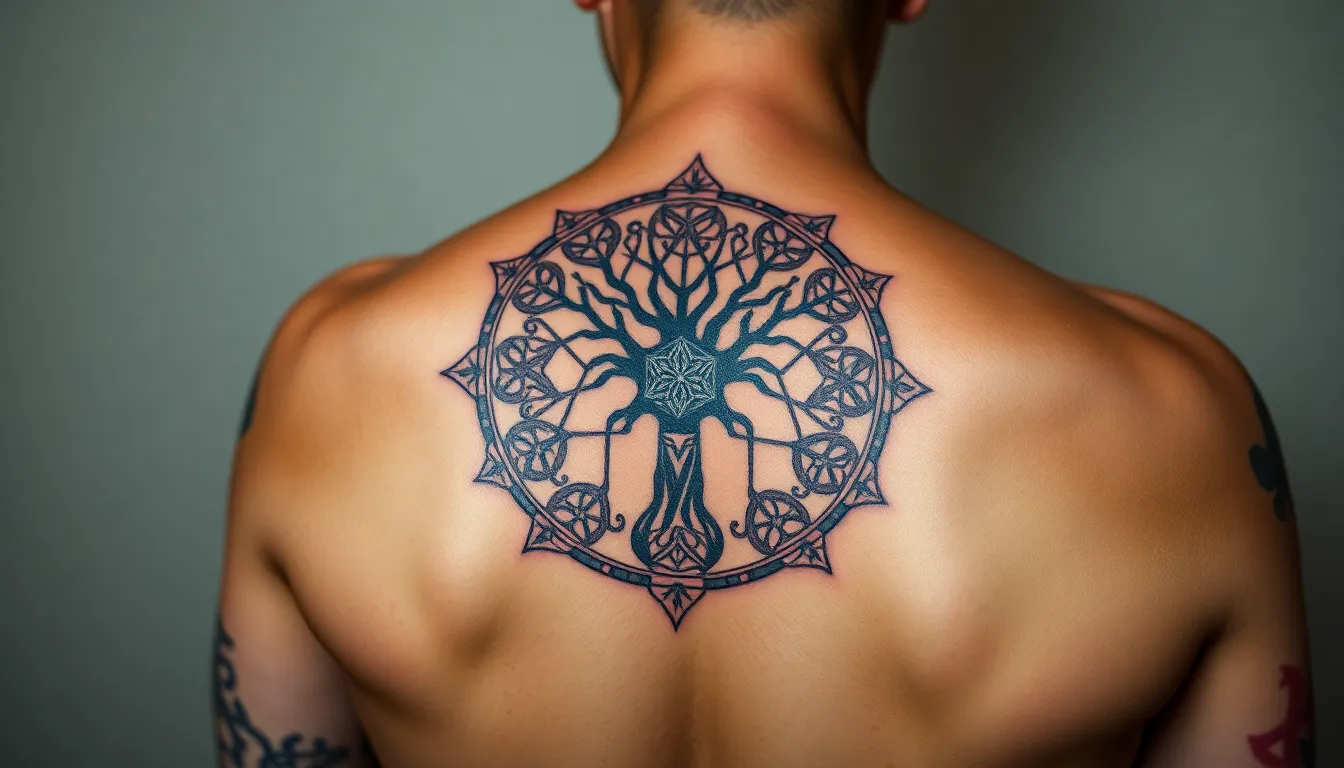
Kabbalah, the Jewish mystical tradition, offers profound spiritual symbols that translate beautifully into meaningful tattoo art. These mystical designs connect us to divine energy and sacred wisdom through intricate patterns and symbolic representations.
Sacred Geometry Patterns
Sacred geometry patterns serve as powerful foundations for Kabbalistic tattoo designs, representing the interconnectedness of all creation through mathematical precision. The Tree of Life stands as the most central symbol in Kabbalah, illustrating the divine flow of energy through ten interconnected spheres that map our spiritual journey toward enlightenment.
Metatron’s Cube emerges as another compelling geometric figure, believed to contain the seeds of creation within its complex pattern of circles and lines. Artists often incorporate this symbol into larger pieces, combining it with Hebrew letters or other mystical elements to create comprehensive spiritual narratives.
The Flower of Life pattern captures the essence of universal connection, with its overlapping circles forming a sacred mandala that represents the fundamental forms of space and time. This design works exceptionally well as standalone tattoos or as background elements for more complex Kabbalistic compositions.
Within the Flower of Life, we find the Seed of Life pattern, symbolizing fertility and the seven days of creation. Tattoo artists frequently use this motif to represent new beginnings and divine creativity, making it particularly meaningful for those embarking on spiritual transformations.
Sephirot Tree Representations
Sephirot Tree representations offer deeply personal ways to express our connection to divine attributes and spiritual growth through body art. Each of the ten Sephirot serves as an energy center representing different aspects of the divine, from Keter (Crown) at the top to Malkuth (Kingdom) at the base.
Individual Sephirot make compelling focal points for smaller tattoos, with each sphere carrying its own unique spiritual significance and visual appeal. Chokmah (Wisdom) and Binah (Understanding) often appear as paired designs, representing the balance between intuitive and analytical thinking.
Complete Tree of Life tattoos typically require larger canvas areas like the back or chest to accommodate the intricate pathways connecting all ten Sephirot. These comprehensive designs allow for detailed artistic interpretation while maintaining the sacred structure that guides Kabbalistic meditation and study.
Modern interpretations blend traditional Sephirot arrangements with contemporary artistic styles, incorporating watercolor effects, geometric backgrounds, or flowing organic elements. These adaptations help bridge ancient wisdom with personal aesthetic preferences while preserving the essential spiritual meaning.
Mystical Hebrew Letters
Mystical Hebrew letters carry profound significance in Kabbalistic tradition, with each character embodying exact spiritual energies and divine attributes. The Aleph, as the first letter of the Hebrew alphabet, symbolizes divine unity and the beginning of all creation, making it a popular choice for those seeking to represent new spiritual beginnings.
Individual letters often combine with their numerical values (gematria) to create layered meanings within tattoo designs. The letter Yod, representing the divine spark, frequently appears in minimalist designs that emphasize its powerful spiritual essence even though its simple visual form.
Sacred letter combinations form mystical words and phrases that hold special power in Jewish tradition, with the Tetragrammaton (YHVH) being among the most revered. These four Hebrew letters representing God’s name create stunning visual compositions while carrying the deepest spiritual significance.
Contemporary artists incorporate Hebrew letters into flowing calligraphic designs, sacred geometry patterns, or architectural elements that honor both the letter’s meaning and aesthetic appeal. These approaches allow for personal interpretation while maintaining reverence for the sacred nature of Hebrew script in Jewish mystical practice.
Jewish Holiday Themed Tattoo Art
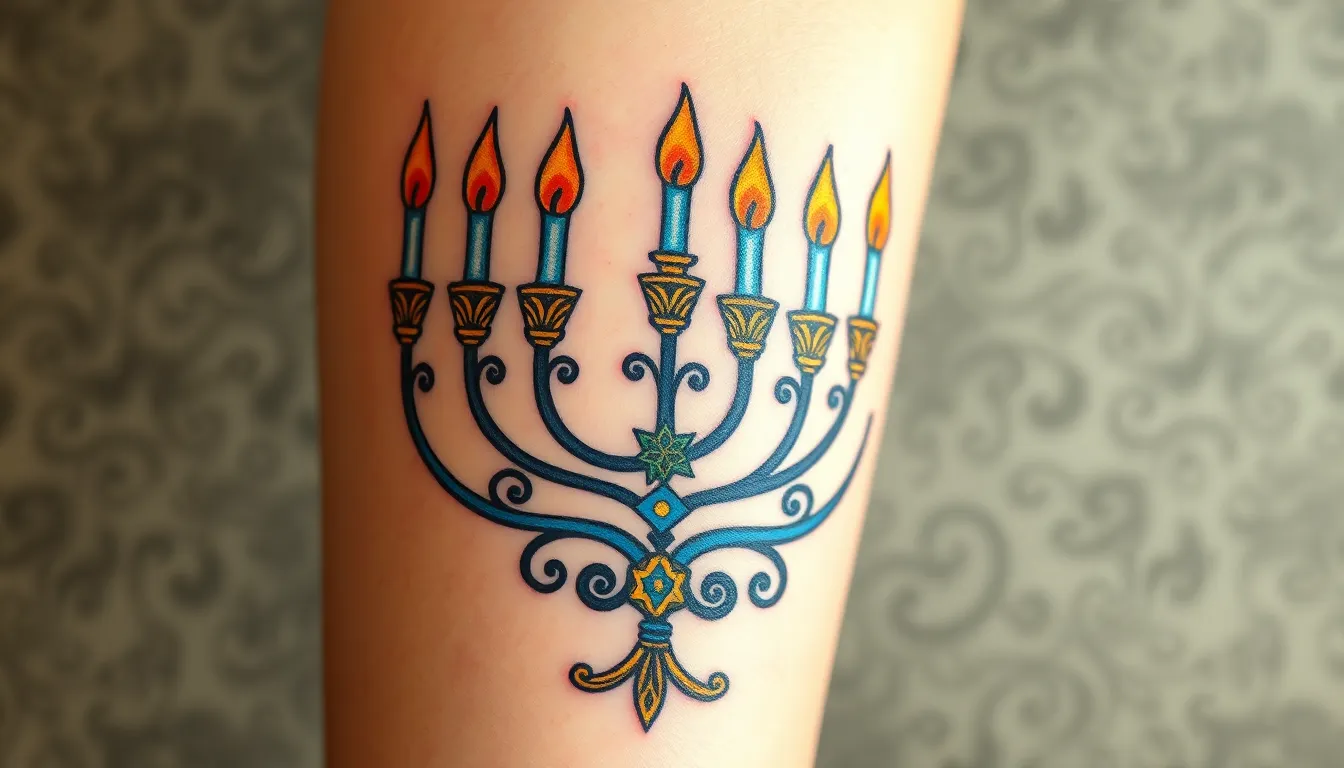
Jewish holiday inspired tattoos offer powerful connections to sacred celebrations and seasonal traditions that mark our spiritual calendar throughout the year.
Passover Seder Elements
Passover tattoos commemorate the liberation from Egypt through meaningful Seder plate imagery that captures this foundational Jewish experience. We see designs featuring matzo representations with intricate textures and geometric patterns that honor the bread of affliction. Seder plate tattoos incorporate the six symbolic foods including charoset, maror, and karpas in artistic arrangements that tell the Exodus story.
Popular placements include forearm designs where the Pesach cup becomes a central focal point surrounded by Hebrew text from the Haggadah. Artists often combine four cups imagery with flowing wine motifs that symbolize the stages of redemption. Memorial elements honoring family Seder traditions appear in these designs through vintage table settings and generational symbols.
Hanukkah Menorah Designs
Hanukkah Menorah tattoos celebrate the Festival of Lights through Hanukkiah imagery that features nine branched candelabra with intricate flame details. We recommend designs that showcase elegant metalwork patterns inspired by traditional menorahs with ornate bases and decorative elements. Contemporary artists create minimalist versions using clean geometric lines that maintain the sacred nine candle structure.
Flame tattoos incorporate vibrant color gradients from blue to gold that represent the miracle of oil lasting eight nights. Detailed engravings on menorah arms often include Hebrew inscriptions and Star of David motifs that enhance the spiritual significance. Placement options range from shoulder pieces that accommodate the horizontal menorah shape to vertical spine designs that emphasize the central shamash candle.
Rosh Hashanah Symbols
Rosh Hashanah tattoos feature shofar horn designs that capture the call to spiritual awakening and renewal at the Jewish New Year. We observe intricate ram horn carvings with Hebrew blessings that accompany the traditional shofar blowing ceremony. Apple and honey imagery creates sweet beginning symbolism through realistic fruit renderings combined with flowing honey drops.
Pomegranate tattoos represent fertility and abundance with detailed seed patterns that reflect the 613 mitzvot tradition. Crown motifs appear in these designs to honor God’s sovereignty during the Days of Awe period. Artists blend these symbols with calendar elements showing the Hebrew date and prayer book imagery that connects to High Holy Day observances.
Placement Considerations for Jewish Tattoos
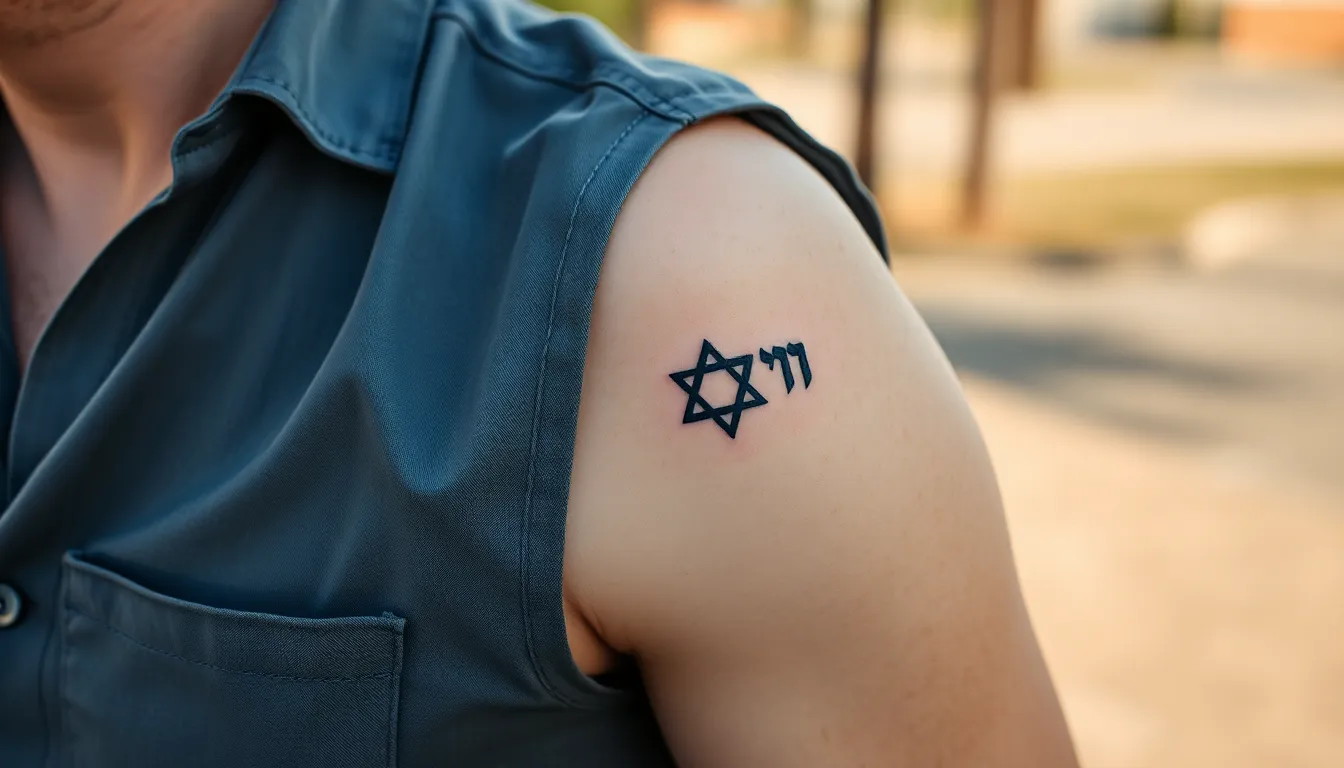
When choosing Jewish tattoo designs, we must carefully consider where these meaningful symbols will be placed on our bodies. Understanding placement options helps us balance personal expression with respect for Jewish traditions and community expectations.
Respectful Body Locations
Back and shoulder placements offer discrete options for Jewish tattoos while maintaining reverence for traditional values. These areas provide ample space for detailed designs like Hebrew calligraphy or Tree of Life imagery without drawing unwanted attention in conservative settings.
Upper arm and ribcage locations allow for medium-sized Jewish symbols that remain hidden under most clothing. We find these spots particularly suitable for personal faith journey expressions and biblical quotes that hold deep spiritual significance.
Behind the ear and wrist placements work well for smaller Hebrew letters or modest Star of David designs. These locations offer visibility when desired while remaining easily concealable during religious services or family gatherings.
Ankle and foot positions provide discrete options for memorial tattoos featuring Hebrew names and dates. Many individuals choose these areas for Holocaust remembrance designs, keeping these powerful tributes close yet private.
Size and Visibility Factors
Small tattoo dimensions typically measure 2-4 inches and blend seamlessly with professional environments and traditional Jewish communities. These compact designs work perfectly for single Hebrew letters, small Stars of David, or brief scriptural quotes.
Medium-sized tattoos spanning 4-8 inches accommodate more detailed Kabbalah symbols or biblical scene artwork while remaining manageable in conservative settings. We recommend these proportions for Tree of Life designs and Hamsa hand tattoos that require intricate detailing.
Large tattoo coverage exceeding 8 inches demands careful consideration of community acceptance and professional implications. Extensive biblical scenes or elaborate Sephirot Tree designs fall into this category and require strategic placement to avoid potential conflicts.
Highly visible areas like hands, neck, and forearms may create challenges in traditional Jewish environments where tattoos face greater scrutiny. Consider these locations carefully when planning Jewish holiday-themed artwork or cultural symbols.
Cultural Sensitivity Guidelines
Religious symbol respect requires understanding the sacred nature of Hebrew script and Jewish iconography before incorporating them into tattoo designs. We must approach Kabbalistic symbols and Torah verses with appropriate reverence and knowledge of their spiritual significance.
Community consideration involves discussing tattoo plans with family members and religious leaders who may have concerns about Jewish law and traditional values. Their perspectives help us navigate potential relationship impacts while honoring our heritage.
Sacred text accuracy demands working with knowledgeable Hebrew translators and Jewish scholars to ensure proper spelling and meaning in scriptural tattoos. Mistakes in Hebrew calligraphy or biblical quotes can unintentionally create offensive or meaningless designs.
Contemporary Jewish values encourage personal expression while maintaining connection to our cultural roots and spiritual traditions. Modern Jewish identity tattoos can celebrate heritage without compromising respect for traditional communities and their beliefs.
Conclusion
Jewish tattoo art represents a beautiful fusion of ancient wisdom and modern self-expression that continues to evolve within our communities. We’ve seen how these meaningful designs serve as powerful connections to our heritage while allowing for deeply personal interpretations of faith and identity.
Whether you’re drawn to traditional Hebrew calligraphy sacred symbols or contemporary interpretations of biblical narratives each tattoo becomes a unique testament to your spiritual journey. The key lies in approaching these designs with respect for our traditions while embracing the creative freedom that modern tattoo artistry offers.
As this art form grows in acceptance we’re witnessing a remarkable transformation in how Jewish identity can be expressed and celebrated through body art. These tattoos aren’t just decorative—they’re living reminders of our rich cultural legacy and personal faith stories.
Frequently Asked Questions
What is Jewish tattoo art and how has it evolved?
Jewish tattoo art is a contemporary form of cultural expression that merges ancient Jewish traditions with modern creativity. It has evolved from traditional taboos to become a meaningful way for individuals to honor their heritage through designs featuring Hebrew calligraphy, Star of David motifs, biblical quotes, and sacred symbols, allowing people to proudly showcase their faith and cultural identity.
What are the most popular Hebrew script tattoo designs?
Popular Hebrew script tattoos include sacred passages from the Torah, traditional prayers like Psalm 23 and the Shema, memorial tattoos with Hebrew names and dates, and personal Hebrew names. These designs often use different calligraphy styles including Ashuri script for religious significance, Rashi script for aesthetic appeal, and modern Hebrew fonts that blend tradition with contemporary design.
Which Jewish symbols are commonly used in tattoo art?
The most common Jewish symbols in tattoo art include the Star of David (representing Jewish identity and divine connection), the Hamsa hand (for protection), and the Tree of Life (symbolizing interconnectedness and spiritual growth). These symbols can be designed as simple minimalist pieces or elaborate combinations with Hebrew text and intricate patterns.
What biblical scenes work well as tattoo inspirations?
Popular biblical scene tattoos include Creation and Garden of Eden imagery featuring the Tree of Life, Exodus scenes depicting Moses parting the Red Sea, and David and Goliath stories celebrating faith over adversity. These designs often incorporate Hebrew text to enhance their spiritual significance and require detailed artistry to capture the powerful narratives.
How do modern Jewish identity tattoos reflect personal faith?
Modern Jewish identity tattoos blend traditional motifs with contemporary techniques, featuring Hebrew calligraphy, cultural symbols like the Star of David and Hamsa, and meaningful combinations such as infinity symbols with Jewish motifs. They often include personal faith journey expressions, Holocaust remembrance elements, and scriptural quotes that honor both individual spirituality and family history.
What are Holocaust remembrance tattoos and their significance?
Holocaust remembrance tattoos are profound tributes honoring family history and preserving collective memory. They include memorial number tattoos replicating Auschwitz serial numbers, important commemorative dates, survivor story tributes with personal quotes, and the phrase “Never Forget” accompanied by commemorative symbols. These tattoos serve as powerful reminders of historical memory and resilience.
What are Kabbalah and mystical Jewish tattoo designs?
Kabbalah tattoos incorporate spiritual symbols connecting individuals to divine energy and sacred wisdom. Popular designs include sacred geometry patterns like the Tree of Life and Metatron’s Cube, the Sephirot Tree with its ten divine spheres, and mystical Hebrew letters with spiritual meanings. Contemporary artists blend these elements with modern aesthetics while honoring the sacred nature of Hebrew script.
How can Jewish holidays inspire tattoo art?
Jewish holiday-themed tattoos offer connections to sacred celebrations through Passover designs featuring Seder plate imagery and matzo, Hanukkah Menorah tattoos celebrating the Festival of Lights, and Rosh Hashanah tattoos with shofar and fruit imagery representing spiritual renewal. These designs allow individuals to express their cultural identity and connection to seasonal traditions.
What placement considerations are important for Jewish tattoos?
Placement should respect both personal expression and Jewish traditions. Recommended locations include back and shoulder areas for discrete designs, upper arm and ribcage for medium symbols, and smaller areas like behind the ear or wrist for visibility. Consider size and visibility factors, opt for small to medium dimensions in conservative settings, and always respect cultural sensitivity guidelines.
How can I ensure my Jewish tattoo is culturally respectful?
Ensure cultural respect by researching the spiritual significance of symbols, avoiding sacred text in inappropriate locations, discussing plans with family and religious leaders, and choosing experienced artists familiar with Jewish symbolism. Balance personal expression with community considerations, and remember that contemporary Jewish values can embrace both tradition and individual spiritual journeys.
